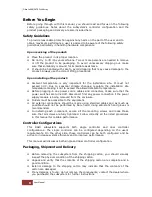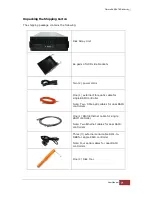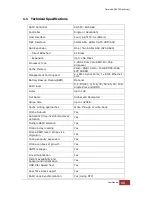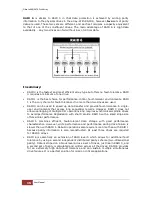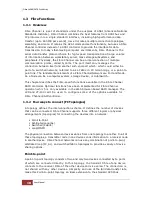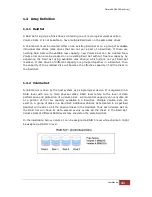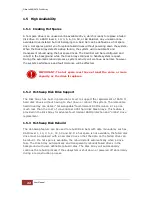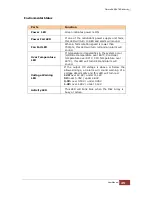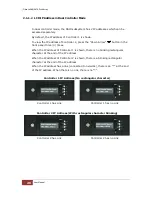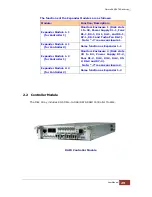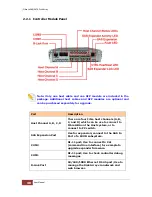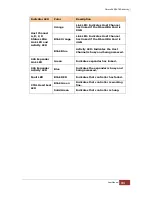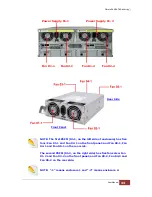
Fibre to SAS/SATA Disk Array
18
User Manual
1.3 Fibre Functions
1.3.1 Overview
Fibre Channel is a set of standards under the auspices of ANSI (American National
Standards Institute). Fibre Channel combines the best features from SCSI bus and
IP protocols into a single standard interface, including high-performance data
transfer (up to 800 MB per second), low error rates, multiple connection topologies,
scalability, and more. It retains the SCSI command-set functionality, but uses a Fibre
Channel controller instead of a SCSI controller to provide the interface for data
transmission. In today’s fast-moving computer environments, Fibre Channel is the
serial data transfer protocol choice for high-speed transportation of large volume
of information between workstation, server, mass storage subsystems, and
peripherals. Physically, the Fibre Channel can be an interconnection of multiple
communication points, called N_Ports. The port itself only manages the
connection between itself and another such end-port which, which could either be
part of a switched network, referred to as a Fabric in FC terminology, or a point-to-
point link. The fundamental elements of a Fibre Channel Network are Port and Node.
So a Node can be a computer system, storage device, or Hub/Switch.
This chapter describes the Fibre-specific functions available in the Fibre Channel
RAID controller. Optional functions have been implemented for Fibre Channel
operation wh i ch i s only available in the Web browser-based RAID manager. The
LCD and VT-100 can’t be used to configure some of the options available for
Fibre Channel RAID controller.
1.3.2 Four ways to connect (FC Topologies)
A topology defines the interconnection scheme. It defines the number of devices
that can be connected. Fibre Channel supports three different logical or physical
arrangements (topologies) for connecting the devices into a network:
Point-to-Point
Arbitrated Loop(AL)
Switched (Fabric)
Loop/MNID
The physical connection between devices varies from one topology to another. In all of
these topologies, a transmitter node in one device sends information to a receiver node
in another device. Fibre Channel networks can use any combination of point-to-point,
arbitrated loop (FC_AL), and switched fabric topologies to provide a variety of device
sharing options.
Point-to-point
A point-to-point topology consists of two and only two devices connected by N- ports
of which are connected directly. In this topology, the transmit Fibre of one device
connects to the receiver Fibre of the other device and vice versa. The connection is
not shared with any other devices. Simplicity and use of the full data transfer rate
make this Point-to-point topology an ideal extension to the standard SCSI bus
Summary of Contents for EP-4643S2D2-F8S6
Page 1: ...Fibre to SAS SATA RAID Subsystem User Manual Revision 1 1...
Page 47: ...Fibre to SAS SATA Disk Array User Manual 47 3 Place the drive carefully in the disk slot...
Page 74: ...Fibre to SAS SATA Disk Array 74 User Manual...
Page 75: ...Fibre to SAS SATA Disk Array User Manual 75...
Page 76: ...Fibre to SAS SATA Disk Array 76 User Manual...
Page 77: ...Fibre to SAS SATA Disk Array User Manual 77...
Page 78: ...Fibre to SAS SATA Disk Array 78 User Manual...
Page 79: ...Fibre to SAS SATA Disk Array User Manual 79...
Page 140: ...Fibre to SAS SATA Disk Array 140 User Manual...



